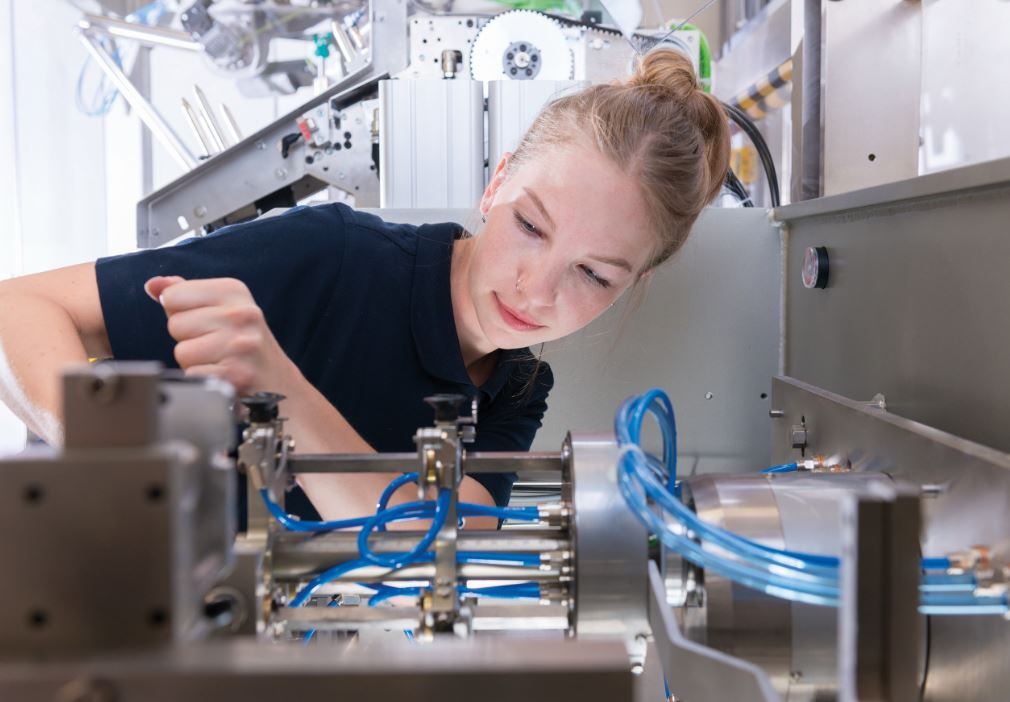Yesterday’s traditional packaging is quickly becoming redundant.
The standard benefits of ‘protection,’ ‘communication,’ ‘convenience’ and ‘containment’ no longer cut the mustard in the face of rapidly increasing customer experience expectations and product complexities, along with global pressure to foster a circular economy.
Producers are under pressure, too, to develop products with fewer preservatives that meet stricter regulatory requirements, which can be tracked from cradle-to-grave, the latter a mandatory criteria of the US Food Safety Modernization Act (FSMA).
The packaging of tomorrow also needs to fit into the broader realm of Industry 4.0, in which production is driven by wireless connectivity and sensors connected to a system that can visualize the entire line and make decisions on its own.
Breaking down the definitions
To give it a collective name, the ‘smart’ packaging sector is developing rapidly and is expected to reach $26.7bn by 2024.
However, a 2018 UK study published in Procedia CIRP – an open access journal for the International Academy for Production Engineering – contends the segment should be broken into three distinct pillars:
- Active packaging: incorporating additives aimed to maintain or extend product quality and shelf-life.
- Intelligent packaging: capable of carrying out intelligent functions to warn of potential problems and ultimately improve product quality.
- Smart packaging: combining both of the above to provide a complete solution.
Although the terms are often used interchangeably, the researchers said each has a base of technologies that vary in hardware, and also in the amount and type of data it can generate, capture, process and distribute.
Active
Active packaging was the first step in the metamorphosis of traditional packaging, introduced in response to the ever increasing demands of consumers and market trends.
According to the authors, the technology embeds components like oxygen and ethylene scavengers, flavor and odor absorbers and releasers, or antimicrobials and antioxidants into the packaging, which introduce or destroy undesirable substances from the environment or the product itself that will affect its quality.
The advantages of this packaging include reducing the amount of active substances or unnecessary industrial processes that might introduce bacteria, meeting consumer demand for clean label products.
Intelligent
Intelligent packaging systems contain hardware components that carry out functions like sensing, detecting, tracing, recording and communicating info – for example, a change in temperature of pH level – to enable producers to make faster and more accurate decisions to preserve and maintain food quality.
These include gauges like time temperature indicators, gas detectors, freshness or ripening indicators, radio frequency identification (RFID) systems and smart labels.
This technology is often complemented with biosensors to detect, record and transmit info related to potential biological processes and reactions occurring inside the package, like freshness levels.
These labels are also a boon against theft, impart safety assurance to consumers that the product has not been compromised and can help prevent or minimize recalls – as well as locating any affected products, if need be.
Smart
Smart packaging offers a two-pronged solution: on the one hand, monitoring changes in the product or the environment (intelligent) and on the other, acting upon these changes (active).
The UK researchers note the technology utilizes chemical sensors or biosensors – that detect and analyse everything from freshness to pathogens to leakages – to monitor the quality and safety of food all the way from producer to consumer.
The packaging’s functionalities can be tailored depending on the application, along with the exact conditions to be monitored, conveyed or adjusted.
A product can be tracked and traced throughout its lifecycle with the ability to convey the product’s condition at any given time.
Benefits
Apart from the above mentioned benefits, ‘smart’ packaging can open a raft of opportunities to enable producers cope with the increasingly exacting environment they work in.
Food safety is a big issue. Researchers have identified more than 250 foodborne diseases – caused by a variety of bacteria, viruses and parasites – that are not particular of who, where or when they afflict.
The World Health Organization estimates that, annually, unsafe food causes 600 million cases of foodborne diseases and 420,000 deaths around the world, 30% of which are children under the age of five.
Hence, write the study’s authors, it’s not surprising that detecting pathogens is one of the key application areas of smart packaging.
Similarly, the war against food waste is reaching critical point. According to the United Nations, over 1.3bn metric tons of all edible products is lost or wasted annually – scandalous when more than 900 million of the world’s souls don’t know where their next meal will come from.
This massive waste of food constitutes a significant financial burden for the food industry, so it makes sense to push for technologies that will stem the loss.
No less important – and just as attractive – is the prospect of enabling producers to move into unchartered geographical markets due to increased shelf life of a product.
Challenges
However, it’s not all cut and dried and the study’s authors highlighted a number of challenges facing the sector.
On the consumer front, self-heating food packaging are making it easy for consumers to have a snack and a hot beverage and a snack. It also helps to communicate and monitor regarding food quality using time-temperature indicators.
The changing lifestyle of customers because of quick urbanization and expanded utilization of individual personal items with advanced integrated innovation drive the smart packaging market growth. Moreover, undiscovered geographical markets offering gigantic open doors for the market players are relied upon to fuel the worldwide packaging market industry.
Excessive cost of capital for instalment, security issues, new techniques for fabricating such sensors and indicators that are compatible with current packaging standards and awareness among consumers are key restraints.
So, too, is the waste generated from smart packaging, which is mostly unsuitable for recycling. Further research is needed to find more suitable materials that support sensor and communication functionalities, but are biodegradable, said the researchers.
From an information and communication technology point of view, the actual integration of smart packaging into the growing number of horizontally and vertically integrated production networks as part of the Industrial Internet of Things (IIoT) also requires the manufacturing sector to overcome a number of challenges, including a seamless integration of their internal Information Technology (IT) and Operational Technology (OT) platforms.
Opportunities
However, there is a light at the end of the tunnel, concluded the authors, countering the challenges with some tantalizing opportunities., such as the adoption of nanotechnology – likely to play an important part in the new future; and the technologies’ promising ability to enable autonomic detection and response to cyberattacks.
And last, but not least, the very attractive prospect of enabling producers to move into unchartered geographical markets due to increased shelf life of a product.
Study:
Smart Packaging: Opportunities and Challenges
Authors: Dirk Schaefer and Wai M.Cheung
Procedia CIRP, Volume 72, 2018, Pages 1022-1027




